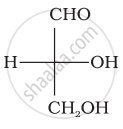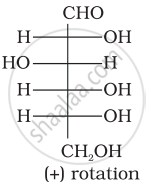Advertisements
Advertisements
प्रश्न
Explain formation of peptide linkage in protein with an example.
उत्तर
Proteins are polymers of α-amino acid, and a huge number of α-amino acid peptide bonds connect them (amide bond).
A peptide bond is a chemical link produced between two molecules when one of their carboxyl groups combines with the amino group of the other releasing a water molecule (H2O). This is a dehydration synthesis reaction (also known as a condensation reaction) that happens most commonly between amino acids.
For example:

APPEARS IN
संबंधित प्रश्न
How is tripeptide formed?
What are the common types of secondary structure of proteins?
What type of bonding helps in stabilising the ∝-helix structure of proteins?
Write one difference between α-helix and β-pleated structures of proteins.
Differentiate between the following :
Peptide linkage and Glycosidic linkage
The helical structure of protein is stabilized by:
Which functional group participates in disulphide bond formation in proteins?
Proteins are found to have two different types of secondary structures viz. α-helix and β-pleated sheet structure. α-helix structure of protein is stabilised by:
Optical rotations of some compounds along with their structures are given below which of them have D configuration.
| (I) |  |
| (II) |  |
| (III) |  |
In fibrous proteins, polypeptide chains are held together by:
(i) van der Waals forces
(ii) disulphide linkage
(iii) electrostatic forces of attraction
(iv) hydrogen bonds
Which of the following are purine bases?
(i) Guanine
(ii) Adenine
(iii) Thymine
(iv) Uracil
Structures of glycine and alanine are given below. Show the peptide linkage in glycylalanine.
\[\ce{\underset{(Glycine)}{H2N - CH2 - COOH}}\];
\[\begin{array}{cc}
\ce{H2N - CH2 - COOH}\\
|\phantom{......}\\
\ce{\underset{(Alanine)}{CH3}\phantom{...}}
\end{array}\]
Which moieties of nucleosides are involved in the formation of phosphodiester linkages present in dinucleotides? What does the word diester in the name of linkage indicate? Which acid is involved in the formation of this linkage?
Assertion: β-glycosidic linkage is present in maltose,

Reason: Maltose is composed of two glucose units in which C–1 of one glucose unit is linked to C–4 of another glucose unit.
Explain the terms primary and secondary structure of proteins. What is the difference between α-helix and β-pleated sheet structure of proteins?
The main structural feature of proteins is
Given below are two statements labelled as Assertion (A) and Reason (R).
Assertion (A): Proteins are found to have two different types of secondary structures viz alpha-helix and beta-pleated sheet structure.
Reason (R): The secondary structure of proteins is stabilized by hydrogen bonding.
Select the most appropriate answer from the options given below:
Presence of disulphide link gives rise to which structure of protein?
An α-helix is a structural feature of ______.
Assertion (A): Proteins are polymers of α-amino acids connected by a peptide bond.
Reason (R): A tetrapeptide contains 4 amino acids linked by 4 peptide bonds.
β-pleated sheet structure in proteins refers to ______.
Write a classification of proteins with an example.
